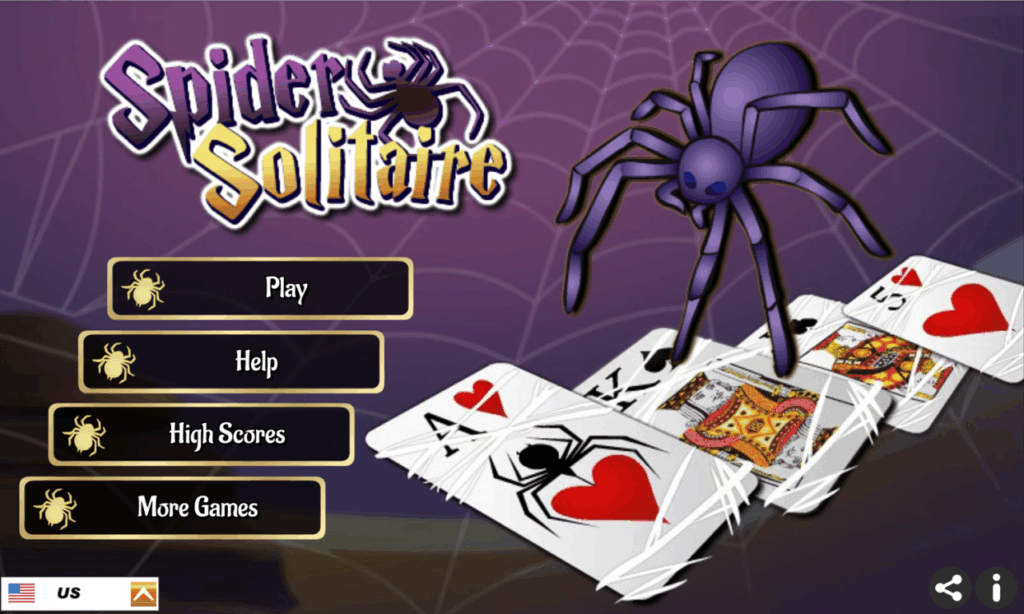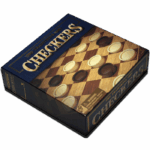Solitaire Spider invites players into a captivating world of strategy and skill, where each move can lead to triumph or defeat. This intriguing variation of the classic solitaire game challenges players to clear the tableau by building complete stacks of cards in descending order, all while navigating through varying levels of difficulty and unique gameplay elements. With its rich history spanning multiple platforms, Solitaire Spider has evolved to captivate both casual gamers and seasoned strategists alike.
As players delve deeper into the mechanics of Solitaire Spider, they discover a blend of luck and strategy, where understanding the rules and objectives is just the beginning. The game offers various difficulty levels that cater to both novices and experts, ensuring that everyone can find a suitable challenge. This engaging exploration not only enhances gameplay but also enriches the player’s experience, making each session a unique journey.
Overview of Solitaire Spider
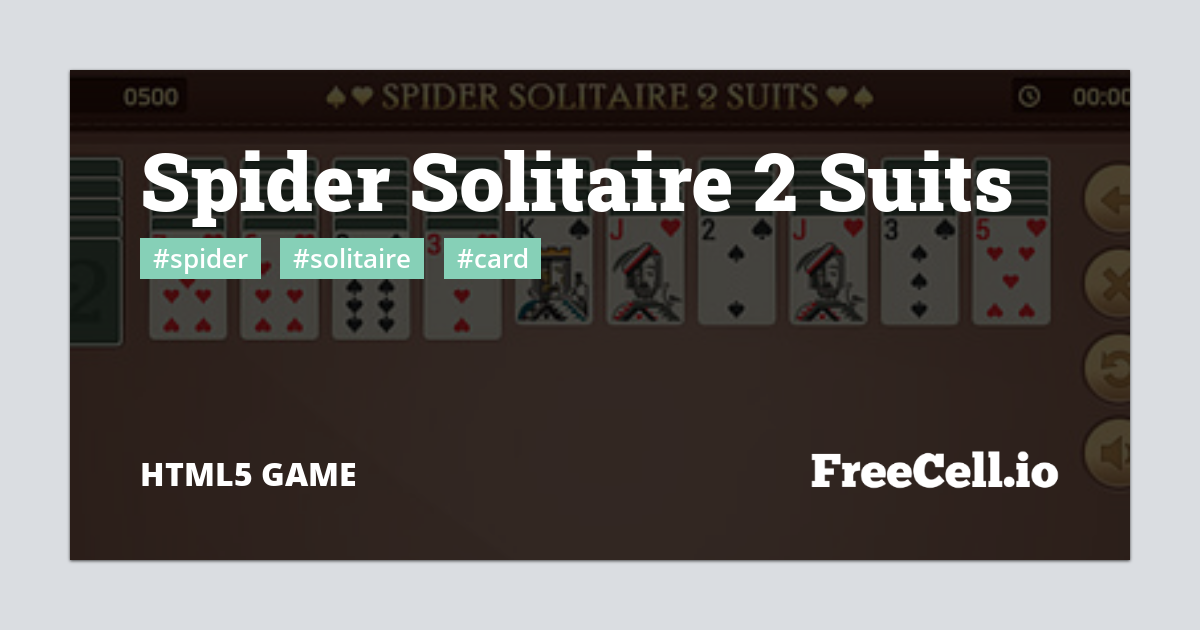
Solitaire Spider is a captivating card game that combines strategy and skill, providing players with a unique challenge. The objective is to build complete suits in descending order from King to Ace. As players delve into the game, they will discover its various complexities and the different levels of difficulty it presents. Over the years, Solitaire Spider has evolved significantly, transitioning from traditional card tables to digital platforms, making it accessible to a broader audience.
The primary rules of Solitaire Spider involve using two decks of cards, resulting in a total of 104 cards. The game starts with ten tableau piles, where the first four piles contain six cards each and the remaining six contain five cards each. Players aim to build eight complete sets of cards from King to Ace, which they can then move to the foundation area. Cards that are not currently in play can be drawn from the stockpile when necessary, allowing players to strategize their moves.
Levels of Difficulty in Solitaire Spider
Solitaire Spider offers various levels of difficulty that cater to both beginners and seasoned players. Understanding these levels is essential for tailoring the gaming experience to fit one’s skill set.
- Easy Mode: In this beginner-friendly mode, players are provided with a simplified challenge. This mode typically involves only one suit, making it easier to form complete sets.
- Medium Mode: This intermediate level introduces a second suit, increasing the complexity of the game. Players must now think several moves ahead to manage the mixed suits effectively.
- Hard Mode: The most challenging level features all four suits, demanding maximum concentration and strategic planning. Players must navigate through various combinations to build complete sets efficiently.
History and Evolution of Solitaire Spider
Solitaire Spider has a rich history that dates back to the 1940s when it was first introduced in the United States. Initially, it was played with physical cards and gained popularity among card enthusiasts. As technology advanced, Solitaire Spider found its way into the digital realm, allowing more players to engage with the game through personal computers and mobile devices.
The evolution of Solitaire Spider has been marked by the development of various software and mobile applications that have enhanced user experience. Today, many online platforms offer Solitaire Spider variants with different themes and additional features, such as customizable backgrounds and animated cards. This transition from a simple card game to a versatile digital experience has contributed significantly to its enduring popularity, making it a staple in the world of casual gaming.
Strategies for Winning at Solitaire Spider
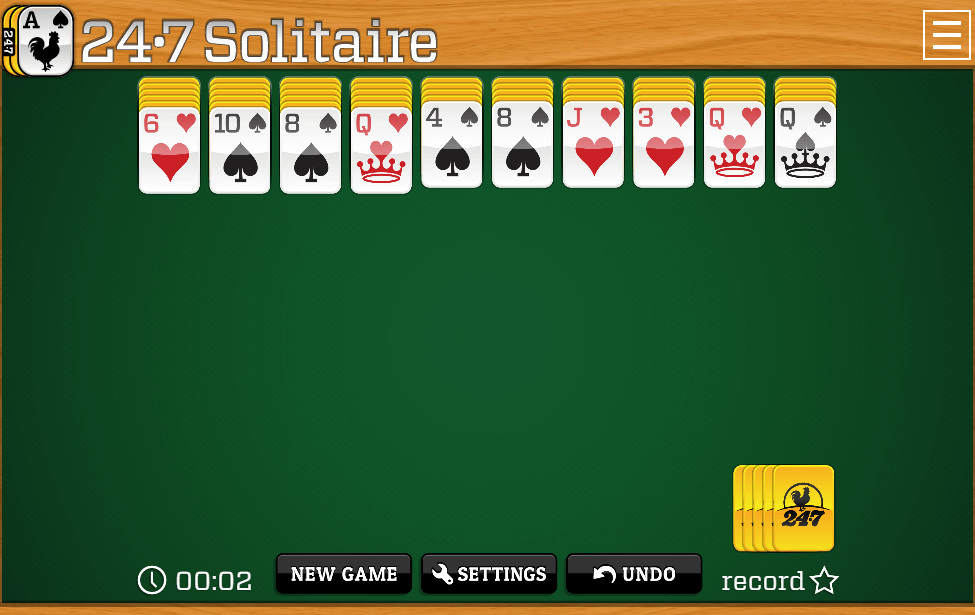
Winning at Solitaire Spider requires a blend of strategy, foresight, and the ability to adapt to changing situations. Successful players not only focus on making the right moves but also anticipate future plays and understand the overarching patterns of the game. Employing effective strategies can significantly increase your chances of success and provide a rewarding gaming experience.
To maximize your moves and ultimately win Solitaire Spider, players must be mindful of their card placement and movement. It is essential to keep the foundations in mind while also managing the tableau efficiently. A successful strategy involves creating sequences, uncovering hidden cards, and maintaining flexibility in your moves. Below are effective strategies along with common pitfalls to avoid during gameplay.
Effective Strategies for Maximizing Moves
Understanding and implementing effective strategies can greatly influence your success in Solitaire Spider. Here are some critical strategies to consider:
- Create Complete Sequences: Aim to build complete sequences from King to Ace. Completing these sequences allows you to remove them from the tableau, which is essential for uncovering hidden cards.
- Prioritize Uncovering Cards: Focus on uncovering face-down cards as much as possible. The more cards you reveal, the more options you have for future moves.
- Utilize Empty Columns: Whenever possible, aim to create empty tableau columns. These can be used strategically to move cards around and free up other cards in the tableau.
- Plan Moves Wisely: Always think a few moves ahead. Consider how each move will impact your future options, and avoid moves that might limit your possibilities later.
Common Mistakes Players Make and How to Avoid Them
Many players fall into traps that can hinder their progress in Solitaire Spider. Identifying these common mistakes and knowing how to avoid them can improve your gameplay significantly:
- Moving Cards Too Quickly: Players often rush to move cards without considering the implications. Take time to analyze your options and think ahead.
- Ignoring Hidden Cards: Focusing on immediate moves while neglecting hidden cards can be detrimental. Always prioritize revealing face-down cards to expand your options.
- Failing to Utilize Empty Columns: Not using empty columns effectively can lead to missed opportunities. Always keep them in mind as strategic tools for rearranging cards.
- Overlooking Suit Completion: Players sometimes neglect to build suit sequences. Completing suits is vital for removing them from the tableau, so aim to complete them early.
Comparison of Beginner and Advanced Strategies
Different levels of players will have varying approaches to Solitaire Spider. Below is a comparative table outlining beginner and advanced strategies in the game.
| Strategy Type | Beginner Strategies | Advanced Strategies |
|---|---|---|
| Card Movement | Focus on individual moves without broader strategy. | Plan multiple moves ahead, considering several future possibilities. |
| Utilizing Columns | Use columns primarily for immediate moves. | Strategically use empty columns to maximize flexibility in card rearrangement. |
| Uncovering Cards | Reveal cards as they come without much planning. | Prioritize uncovering hidden cards to build a strategic advantage. |
| Suit Building | Build suits without clear goals. | Focus on completing suits early to improve game progression. |
Variations and Alternatives to Solitaire Spider
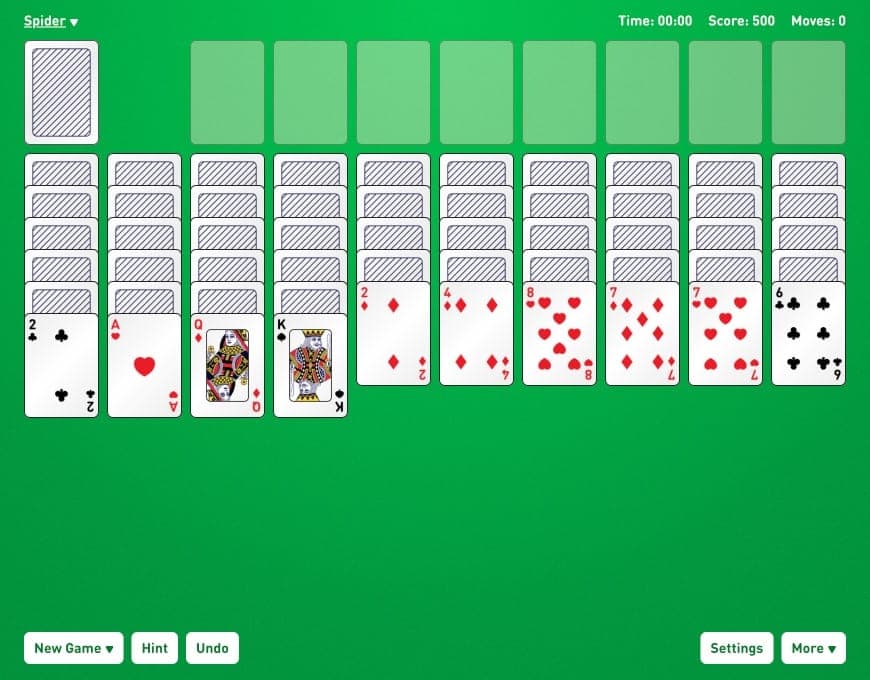
Solitaire Spider has captured the hearts of many card game enthusiasts, but its charm doesn’t stop there. Numerous variations and alternative solitaire games offer unique twists on gameplay while still delivering the strategic depth that players love. This section explores these different iterations, highlighting their distinctive rules and how they compare to traditional Solitaire Spider.
Popular Variations of Solitaire Spider
Numerous variations of Solitaire Spider exist, each with unique twists that cater to different playing styles and preferences. Here are some of the most popular ones:
- Spiderette: This is a simpler version of Solitaire Spider, typically played with only one suit instead of two. Players arrange cards in a tableau and must still build them in descending order. The reduced complexity makes it ideal for beginners or those looking for a quicker game.
- Four Suit Spider: This variation increases the challenge by incorporating all four suits into the game. Players must manage greater complexity, requiring advanced strategies and planning. Successfully completing a game is much more rewarding due to the heightened difficulty.
- Scorpion Solitaire: In this variation, players focus on building sequences of cards that can be moved as a unit. The key difference is the handling of cards; players can only move a card on top of another if it is of a lower value, which adds an additional layer of challenge.
- Yukon Solitaire: This version allows players to move any group of cards, regardless of order, as long as the top card is playable. This rule encourages creative strategies and can lead to unexpected moves that can change the game’s outcome.
Other Solitaire Games Offering Similar Challenges
If you enjoy Solitaire Spider, several other solitaire games present comparable challenges, emphasizing strategy, planning, and patience. Below is a list of games that share similar mechanics and themes:
- Klondike Solitaire: The classic version of Solitaire, where players aim to build four foundation piles in ascending order, using a tableau of seven columns.
- Freecell: A game that requires players to use four free cells to strategically move cards around, providing a unique twist on building sequences.
- Tri-Peaks Solitaire: A fun and visually appealing game that involves clearing cards from three peaks by selecting cards that are one rank higher or lower than the visible card.
- Golf Solitaire: Players work to remove cards in a single tableau by selecting cards that are one rank higher or lower than the current playing card.
Comparison Chart: Solitaire Spider vs. Traditional Solitaire
Understanding the differences between Solitaire Spider and traditional Solitaire can enhance your gameplay experience and help you choose the right game for your mood. The following table summarizes key distinctions:
| Feature | Solitaire Spider | Traditional Solitaire |
|---|---|---|
| Number of Decks | Two decks (104 cards) | One deck (52 cards) |
| Goal | Build complete sequences of cards by suit | Build four foundation piles by suit |
| Suits Played | Two or four suits | Only one suit for each foundation pile |
| Tableau Structure | Up to ten tableau piles | Seven tableau piles |
| Complexity Level | Higher, requiring strategic planning | Moderate, more accessible for beginners |
“The beauty of Solitaire Spider lies in its strategic depth and the satisfaction of building complete sequences.”
Ultimate Conclusion
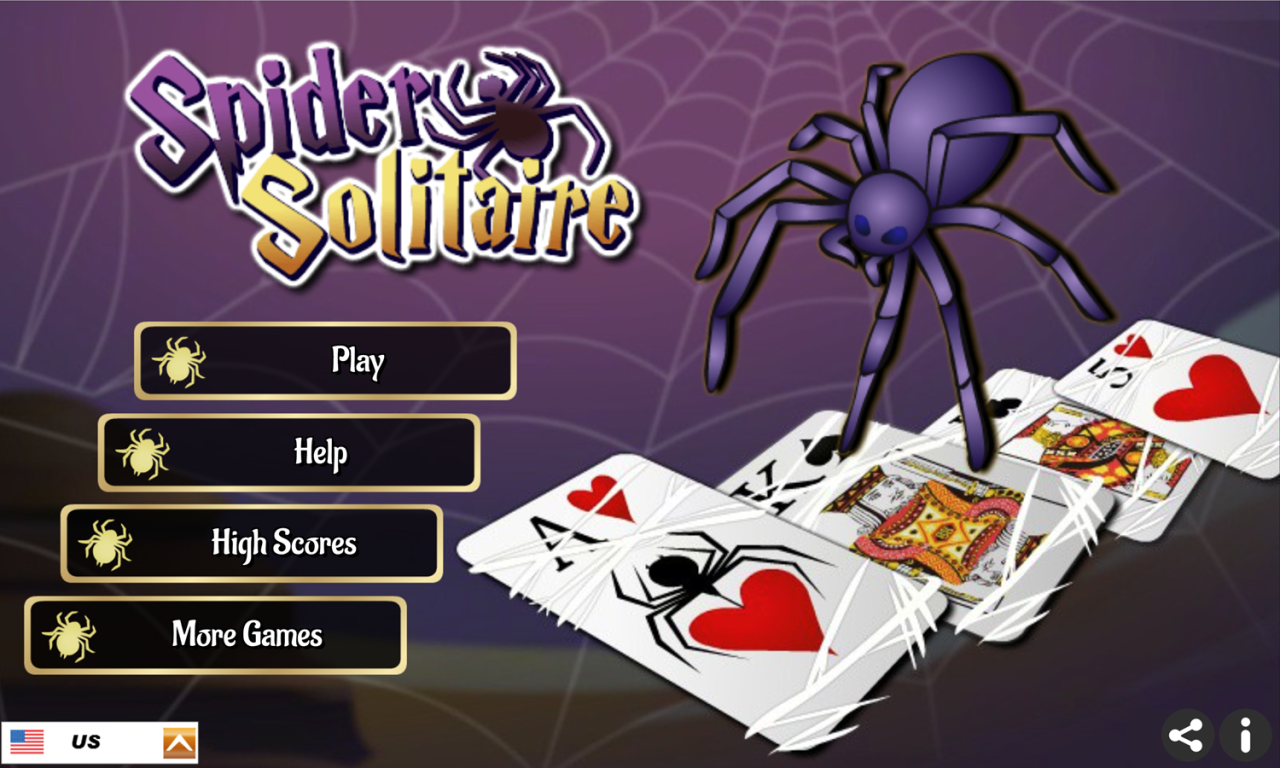
In summary, the allure of Solitaire Spider lies in its intricate blend of strategy, skill, and a touch of luck, making it a favorite for many. By mastering effective strategies and avoiding common pitfalls, players can improve their chances of winning and enjoy the game to its fullest. Moreover, the various alternatives and variations available ensure that there’s always something new to explore, keeping the excitement alive in the world of solitaire gaming.
